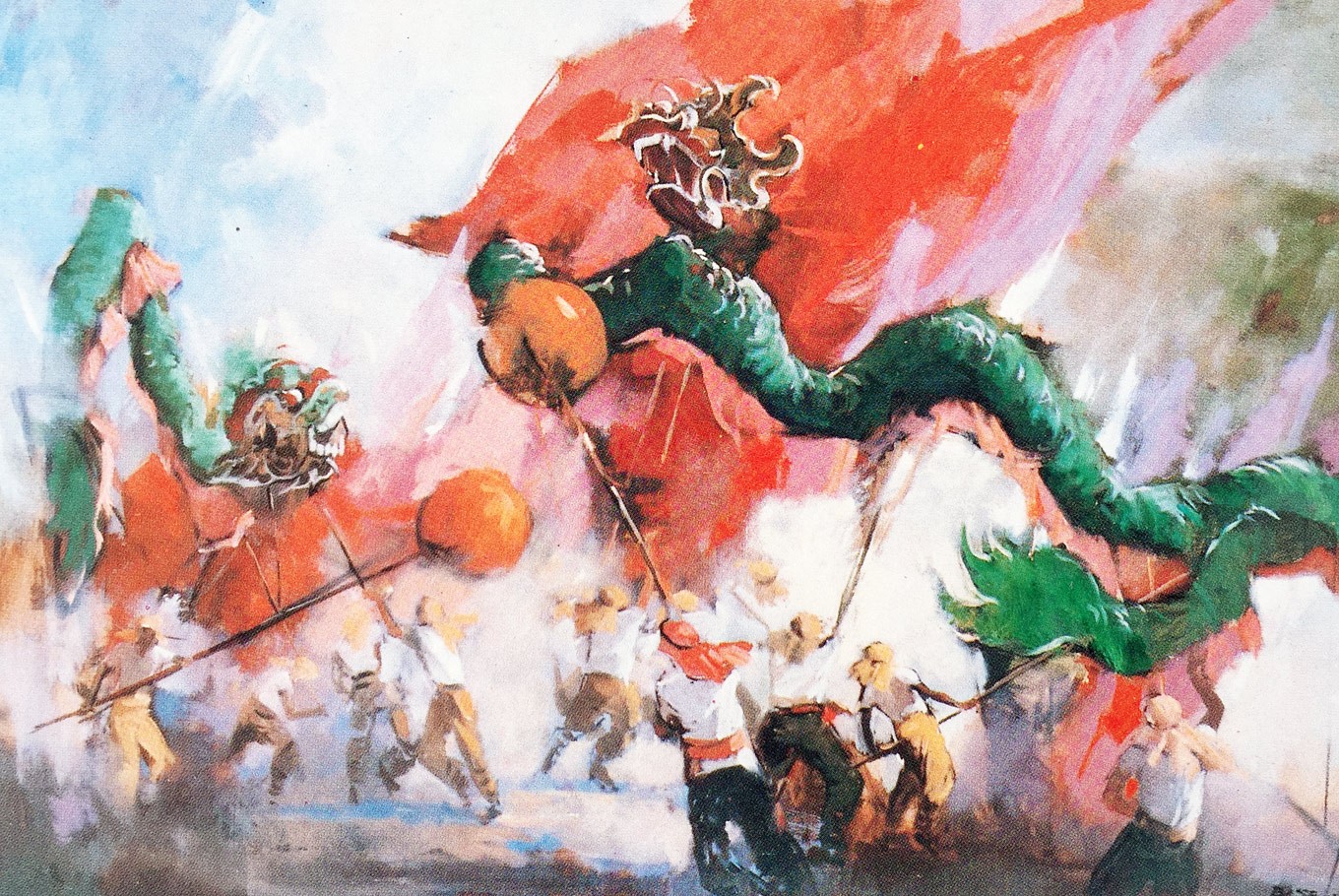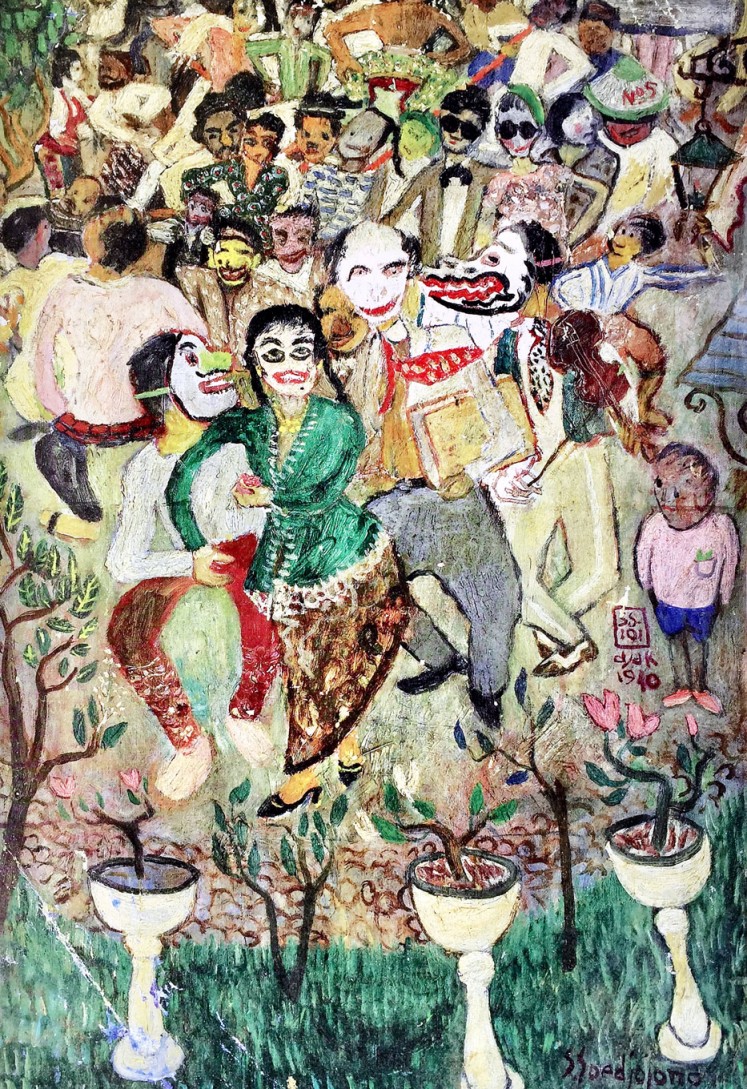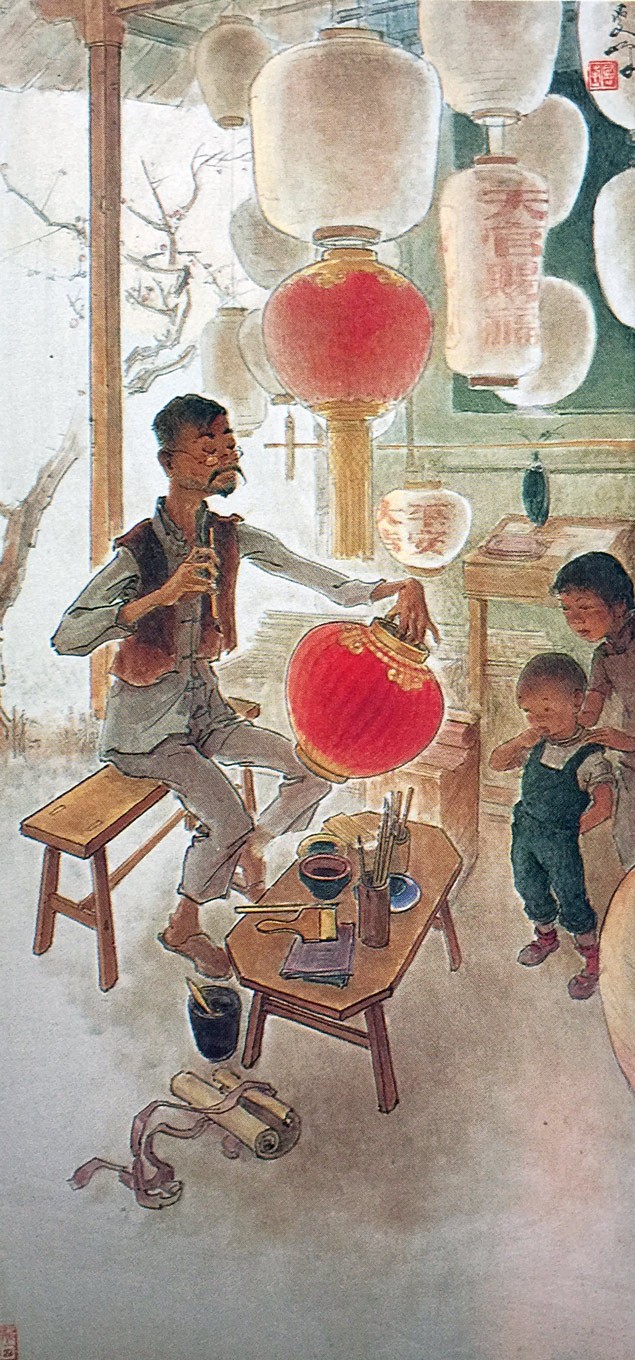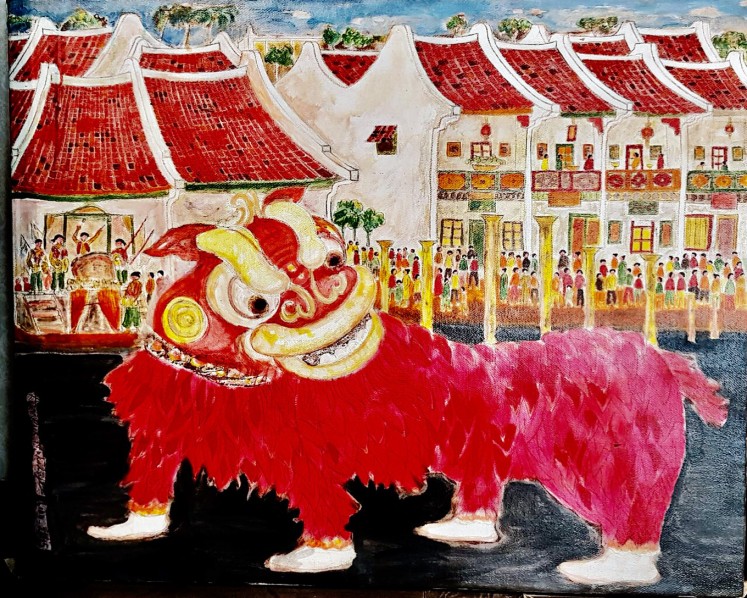Popular Reads
Top Results
Can't find what you're looking for?
View all search resultsPopular Reads
Top Results
Can't find what you're looking for?
View all search resultsSudjojono's criticism in Cap Go Meh
Change text size
Gift Premium Articles
to Anyone
O
n Friday, people of Chinese descent mark Cap Go Meh festival. The celebration, also known as the “happy day”, closes the 15 days of Chinese New Year festivities, as cap go meh means the fifteenth night.
On the full moon of the first lunar month, ethnic Chinese families enjoy their culinary specialties at home. In Indonesia, later spreading to Southeast Asia, the popular dish for this celebration is lontong cap go meh — rice cake in banana leaves served with vegetables in coconut-milk soup containing fried entrails, boiled eggs and chicken curry.
Painters such as Basoeki Abdullah, Lee Man Fong, Amrus Natalsya, Hardi, Robby Lulianto and Lim Hui Yung have tried to capture the merry celebration of Cap Go Meh in Indonesia, but the work of late painter S. Sudjojono (1913-1986) leaves the most memorable impression.
Sudjojono’s Cap Go Meh painting, created in 1940 or around five years before Indonesia gained independence, is famous because it contains social criticism. It is seen by cultural observers as Indonesia’s first modern painting reflecting tolerance among different ethnic, racial, religious and traditional groups. It is also considered social criticism, especially concerning elder people who were preparing themselves to embrace a new chapter in the country’s history.
Cap Go Meh by S. Sudjojono (JP/Agus Dermawan T.)The painting, which is currently part of the Indonesian National Gallery’s collection, presents a comic style by ignoring correct anatomical proportions and realistic depiction. The figures therefore appear cartoon-like, and are even as flat as leather puppets.
Cap Go Meh was later hailed as one of Indonesia’s most distinctive and phenomenal pre-independence paintings. As a narrative canvas, this work is sometimes discussed in terms of its thematic aspect and visual manifestation. But its hidden traditional meaning has not yet been thoroughly exposed.
By tradition, during the full moon on Cap Go Meh, young people would go out to find their marriage partners. In order to caution youngsters caught up in this festive momentum, a saying was made popular: “Hao ni pu yu chuen — hao nan pu khan ten” (nice ladies won’t seek pleasure in spring — nice men won’t be tempted by lanterns). Spring and lanterns respectively symbolize the celebration and women. Back then, Cap Go Meh was already celebrated throughout Indonesia.
Cap Go Meh Celebration Preparation by Lee Man Fong (JP/Agus Dermawan T.)“I know, Cap Go was most joyfully observed in Pontianak, Semarang and Tangerang. But it was no less enthusiastically marked in Batavia or Jakarta, because of Jakarta’s fairly big Chinese community with its subsisting and growing culture,” Sudjojono once said.
During the festivities, Sudjojono observed teenage girls and boys in their best makeup and attire, flocking the yard of a temple or the town square to enjoy traditional puppet or musical shows. While reveling in the art performances, these youngsters were eyeing up suitable matches. Interestingly, indigenous residents also joined the celebration.
Nevertheless, Sudjojono’s Cap Go Meh isn’t just about the festive atmosphere but also includes what was behind the scene. What can be noticed in the partner-seeking arena turns out to be married men and women instead of single young people. The main figure of the painting is an aged man hiding his face behind a mask and dancing with a middle-aged woman.
Consequently, this picture of an event supposedly for the youth only slightly represents the youth, containing just a few glimpses of them merely to indicate their presence. The painting also exposes an old man dancing while holding a book on “grabbing youngsters’ future” under the arm.
Close to the old man with the book is another man carrying a violin. This guy has a crocodile head, which by the painter is likened to not only a music enthusiast but also a womanizer taking pleasure in whatever he desires. Sudjojono’s humorous Cap Go Meh has thus fulfilled its intended meaning.
Barong Cap Go Meh by Amrus Natalsya (JP/Agus Dermawan T.)“In Chinese cosmology, old men are supposed to stay at home [during the celebration] while absorbed in a handkerchief bearing an image of the goddess Magu holding peaches. This deity is a symbol of retirement and gratefulness for senior citizens,” said a sinologist at the University of Indonesia, CM Hsu.
In 1974, when Pertempuran Sultan Agung dan Pieterszooncoen (The Battle of Sultan Agung and Pieterszooncoen) by Sudjojono was launched at the Jakarta History Museum, historian Onghokham pointed out, “Sudjojono’s Cap Go Mehserves as a document of the absurd behavior of a group of people during a period.”
Sudjojono had observed the country’s penchant for playing with fire, taking delight in everything beyond propriety. The absurdity of the elder people in the Cap Go Meh painting is still relevant today, even 78 years after it was painted.














